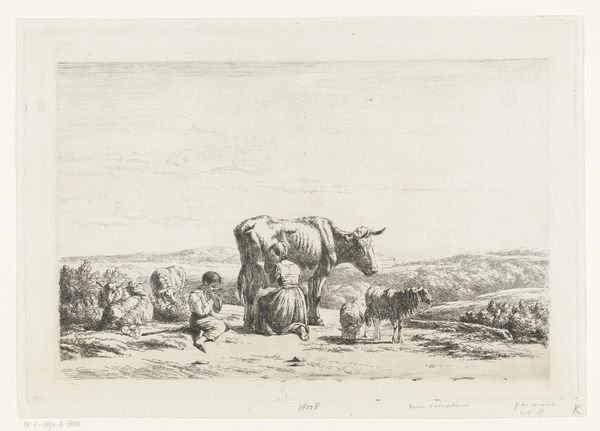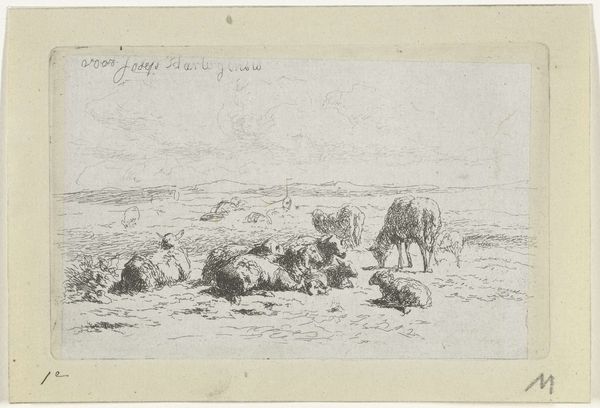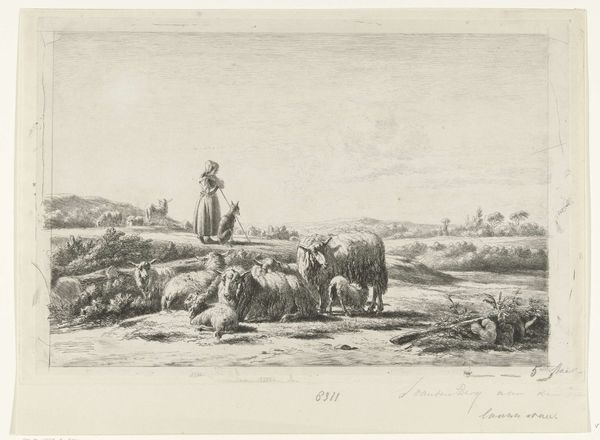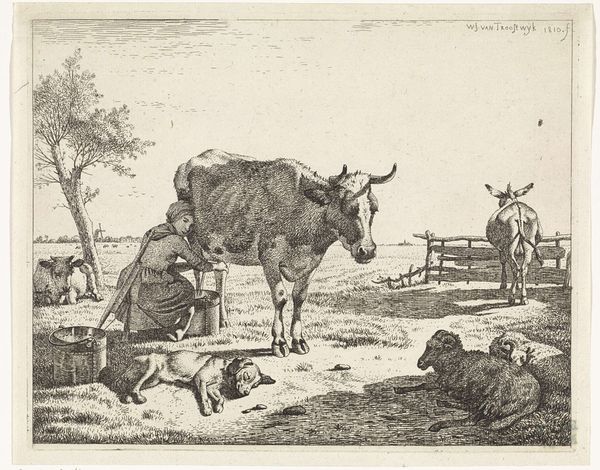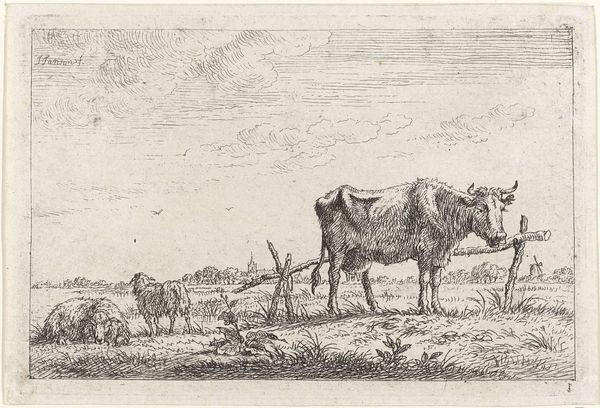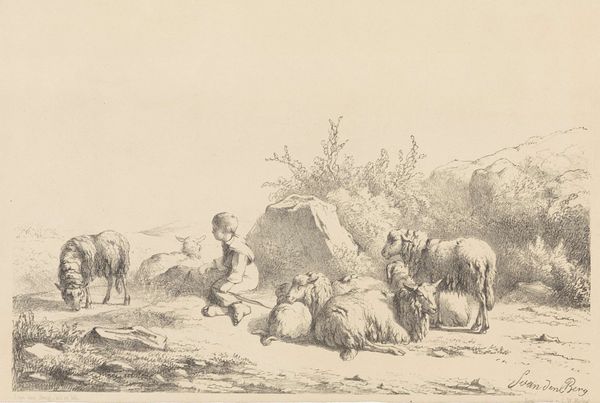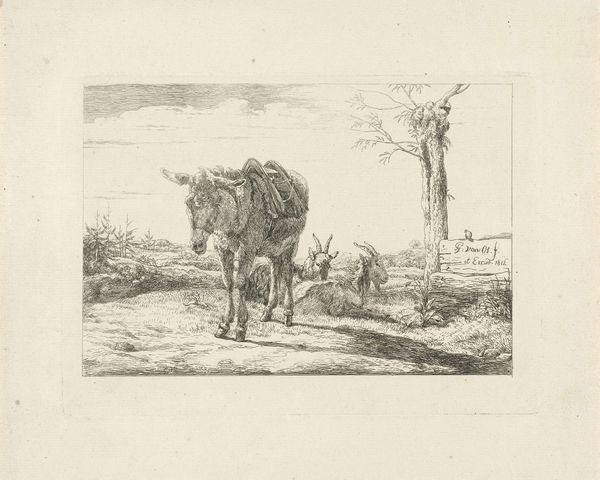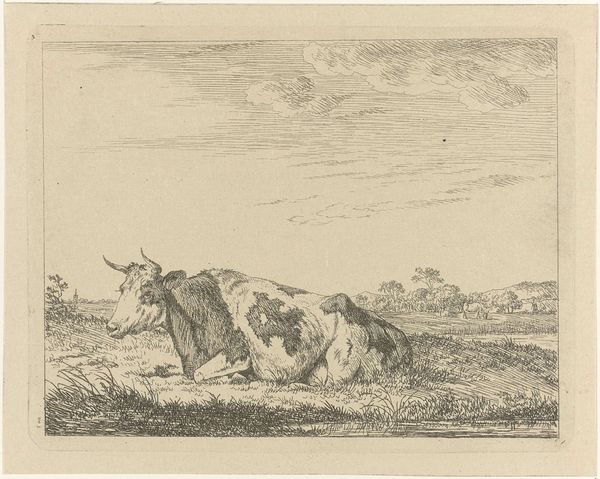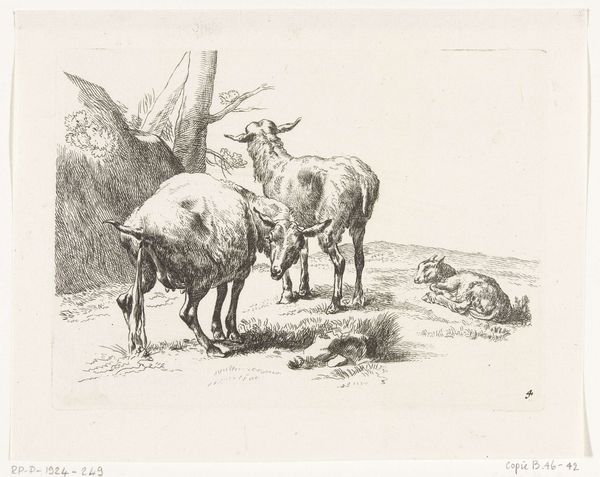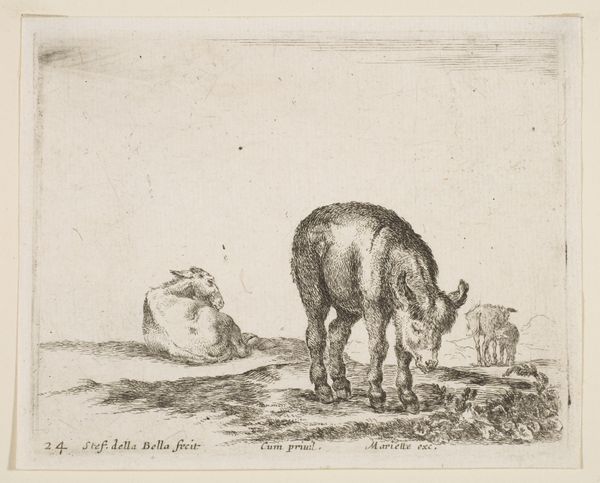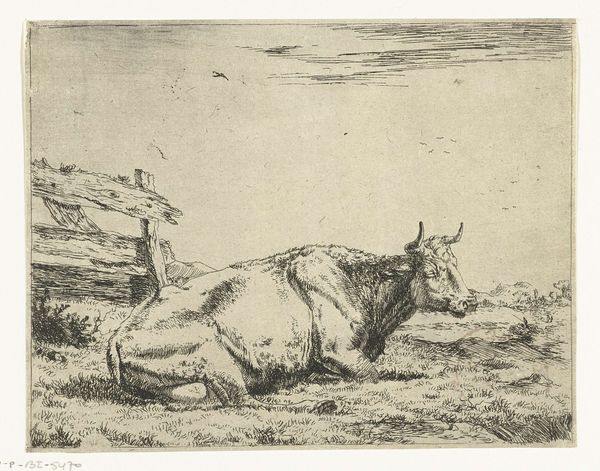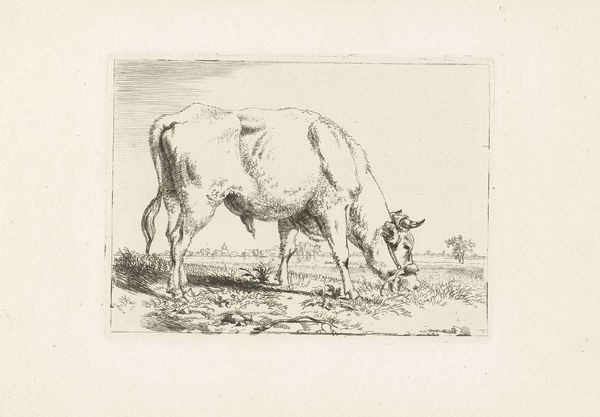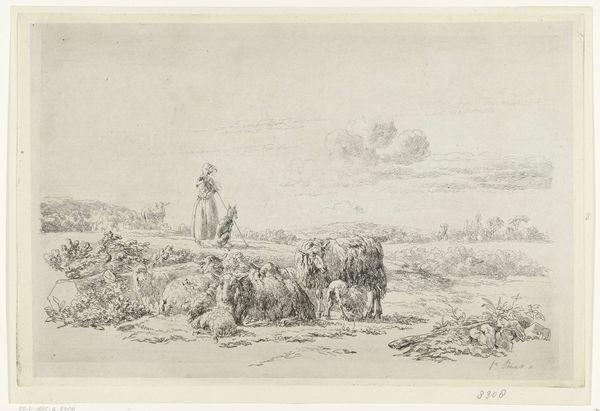
Landschap met vrouw die koe melkt en jongen met schapen 1822 - 1893
0:00
0:00
drawing, print, etching
#
drawing
# print
#
etching
#
pencil sketch
#
landscape
#
genre-painting
#
realism
Dimensions: height 210 mm, width 310 mm
Copyright: Rijks Museum: Open Domain
Editor: Here we have Simon van den Berg's "Landschap met vrouw die koe melkt en jongen met schapen," created sometime between 1822 and 1893. It's an etching, so delicate! I am really drawn to how quiet it feels. How do you see this piece in terms of its historical context? Curator: It's fascinating to consider this print within the burgeoning context of Realism. Van den Berg depicts a seemingly simple genre scene, a woman milking a cow, a boy watching sheep, but what statement, if any, do you think he's trying to make about rural life during this period? Editor: I guess I hadn't thought of it as making a statement. Maybe it is just trying to depict the realities of everyday life for many Dutch people at the time. The unromanticized nature of it, maybe? Curator: Exactly! This shift towards representing the unvarnished truth, moving away from idealized pastoral scenes, speaks to broader social and political changes. Think about industrialization, urbanization... how might these forces influence artistic sensibilities and the desire to capture a vanishing way of life? Were idyllic paintings starting to lose touch with the general population? Editor: I see what you mean! It feels like it acknowledges the hardship and labor involved. It gives me something more relatable. Curator: Precisely. This etching contributes to the important discussion of art’s role in representing and reflecting socio-economic realities of the period. Considering art as a form of social commentary, changes our viewing lens. Editor: It really does! Now, looking at it, I also realize how important it is to appreciate what art tells you about what it was like in history. Curator: Agreed. It challenges the romantic notions about rural existence, prompting questions about labor, class, and the changing landscape of 19th-century Holland, wouldn't you agree?
Comments
No comments
Be the first to comment and join the conversation on the ultimate creative platform.
